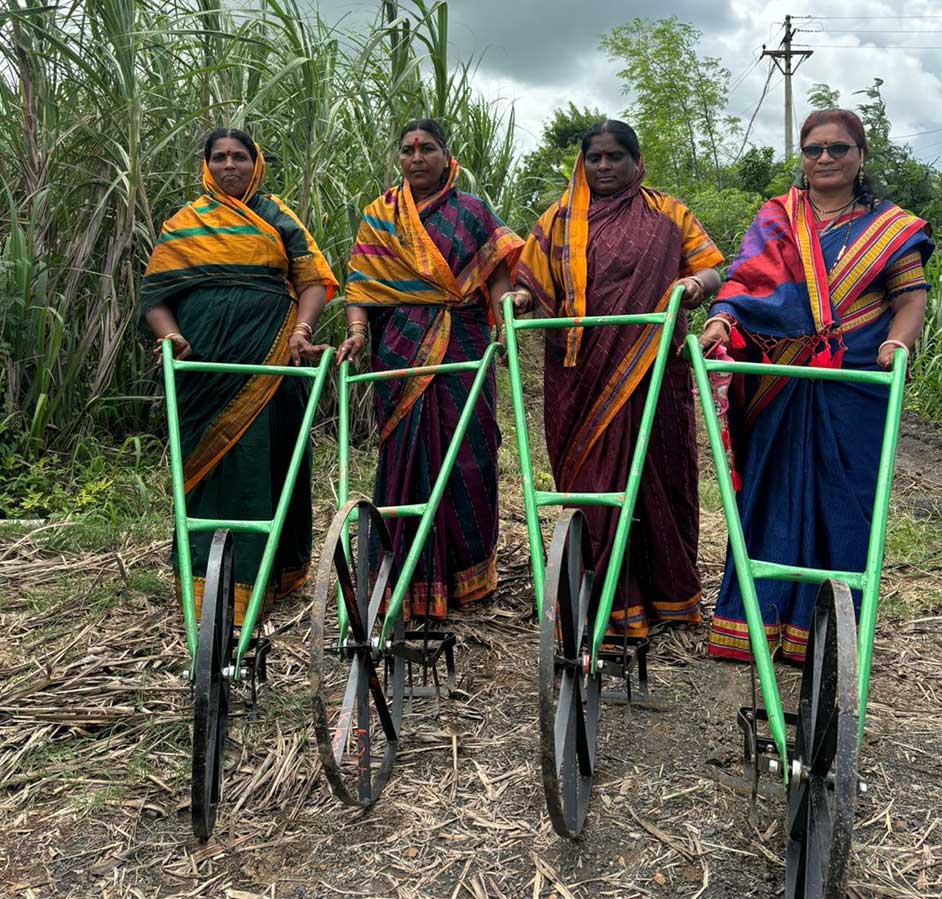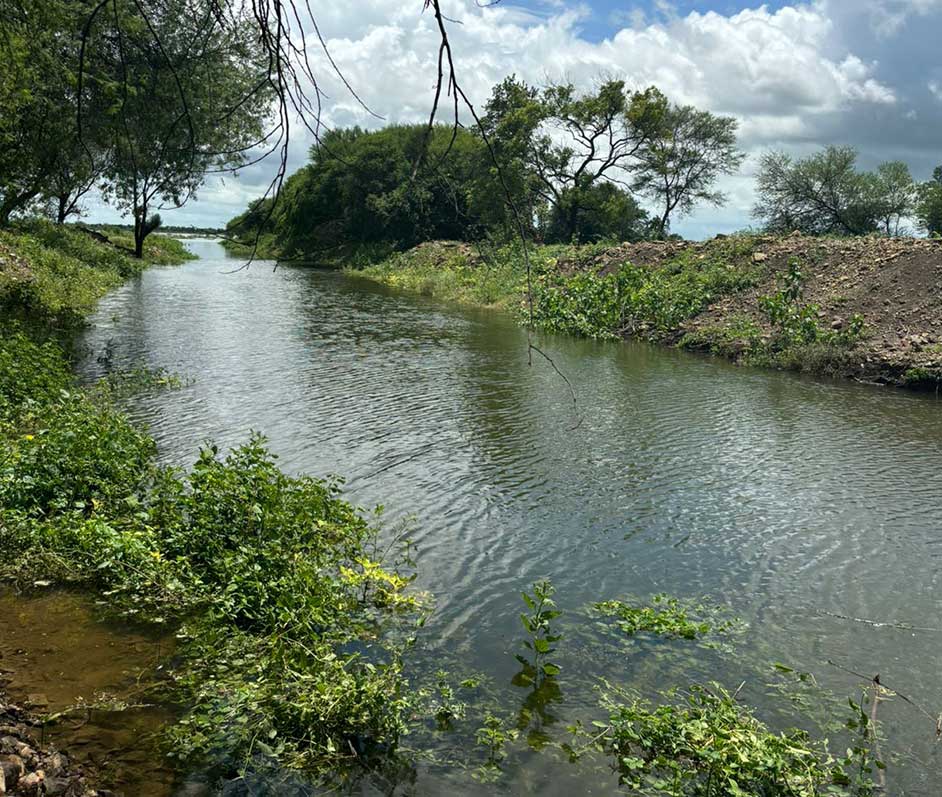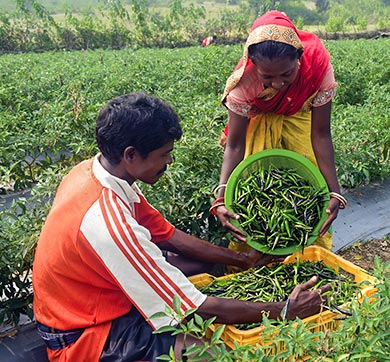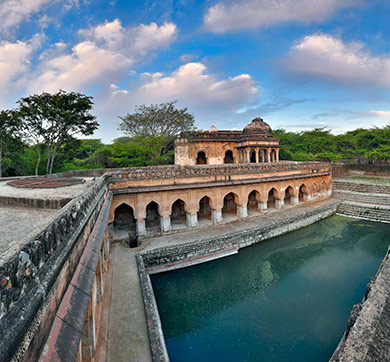November 2024 | 925 words | 4-minute read
Dharashiv district in Maharashtra’s Marathwada region, is no stranger to drought severity. Nestled in the rain-shadow region of the Western Ghats, Marathwada has emerged as the second driest region in India after the north west. The region has experienced a string of droughts over the last few decades, receiving less than 75% of its average rainfall this past year, resulting in loss of livelihoods and lives in the farming community.
To combat these chronic woes, in September this year, Tata Communications launched its Vitalize Rural initiative in collaboration with the Watershed Organisation Trust (WOTR). The project is designed to address environmental and livelihood challenges in rural communities, and through an integrated watershed approach, aims to restore natural resources and promote sustainable farming, ultimately boosting productivity and income for local families.
Mukul Kumar, Vice President and Head, ESG, Tata Communications says, “The Vitalize Rural project embodies Tata Communications commitment to long-term community development. By integrating watershed management with sustainable livelihood initiatives, we strive to foster holistic growth in Dharashiv, Maharashtra. The company’s commitment to environmental stewardship is anchored in initiatives like water and biodiversity conservation, clean energy access, and offsetting carbon and water impacts. “Central to our approach is listening to communities, ensuring our water and resource management projects empower them with the tools for resilience,” adds Mr Kumar.

Driving sustainable and community-centred progress
The Vitalize Rural programme aims to:
- Increase soil moisture and water availability: Ensuring year-round water access for drinking, domestic needs, and irrigation, to support the community’s essential needs.
- Promote climate-resilient agriculture: Introducing practices that enhance sustainability and productivity in agriculture, helping farmers adapt to climate variability.
- Support need-based livelihood activities: Creating tailored livelihood opportunities to uplift marginal and asset-less families, addressing income disparity.
- Build and strengthen community-based institutions: Empowering local institutions to manage resources and sustain the project’s impact, ensuring long-term self-sufficiency for the community.
Impact area
Villages covered: Kaldev Nimbala, Kalnimbala, Rampur and Yeli
Area: 3,801 hectares
Duration: 3 years, up to March 31, 2027

The project is designed to make a significant impact in four villages by enhancing water resources and promoting climate resilience. Key outcomes include establishment of substantial water storage capacity to support local needs, extend watershed and climate adaptation efforts, enhancing soil and water management along with provision of drinking water facilities. Also 380 hectares of land will be equipped with micro-irrigation systems to ensure both reliable crop production and the optimal utilisation of water and inputs, particularly in the face of fluctuating climatic conditions.

Project interventions
Community development initiatives: The programme proposes to form four village development committee, 20 SHGs and 101 farmer groups for the participatory management of this project.
Soil and water conservation measures: A Ridge to Valley perspective will be followed to maximise the conservation, harvesting, and impoundment of rainwater.
Water resources development: With 22 proposed water harvesting structures, farmers will be able to grow multiple crops during the Kharif and Rabi seasons, and the groundwater level will increase.
Three damaged check dams in the project villages will be repaired to maintain their effective capacity, allowing runoff water to be harvested and used efficiently, maximising productivity per drop of water.
Existing government-constructed percolation/storage tanks have significantly reduced storage capacity due to siltation. It is proposed to desilt 5,200 meters of nalas/tanks.
Based on geo-hydrological investigations, a total of 121 groundwater recharge activities are proposed in the four project villages.

Climate resilient agriculture: A total of 600 organic farming demonstrations will be carried out in the project villages, benefiting 600 farmers over a period of three years. A total of 100 orchard plots will be developed as demonstration plots for other farmers to follow. These plots will benefit 100 farmers.
Multilayer farming, a method where plants of varying heights are grown simultaneously on the same field, offers numerous benefits will directly benefit 100 farmers initially.
100 farming women will receive 100 pieces of small agricultural equipment such as wheel hoes and specialised sickles. Each of the 1,717 families will receive a small kit containing different vegetable seed. This approach not only fosters community involvement but also contributes to the overall success of the project initiatives.
Need-based livelihood development: The project aims to empower marginal and asset-less families, as well as others in similar circumstances, by mobilising existing SHGs and forming new ones. Through a combination of farm-based and non-farm-based activities, 100 families will be equipped with the skills and resources needed to adopt alternative livelihoods.

Partnering to effect change
Tata Communications is partnering with government agencies, WOTR and the community, to foster resilience and community ownership for sustainable development through the programme.
Tata Communications’ implementation partner in achieving this vision is WOTR, a registered non-profit organisation which aims to address rural poverty by restoring ecosystems, boosting resilience to climate change, improving water availability, enhancing land productivity and agriculture, diversifying livelihoods, empowering women, and promoting the health and well-being of rural communities.
Through the programme’s duration, Tata Communications will be contributing funds for the implementation of the project and will also closely monitor its progress. WOTR jointly works with Tata Communications’ monitoring and evaluation SPOC and partner to integrate the indicators which WOTR monitors as a part of the graduating process and additionally the indicators which will be important to monitor, keeping in mind the technological input to the scope of the activities.
“Our commitment extends beyond the current phase, as we continually assess community needs and plan additional interventions to create lasting, positive change,” concludes Mr Kumar































